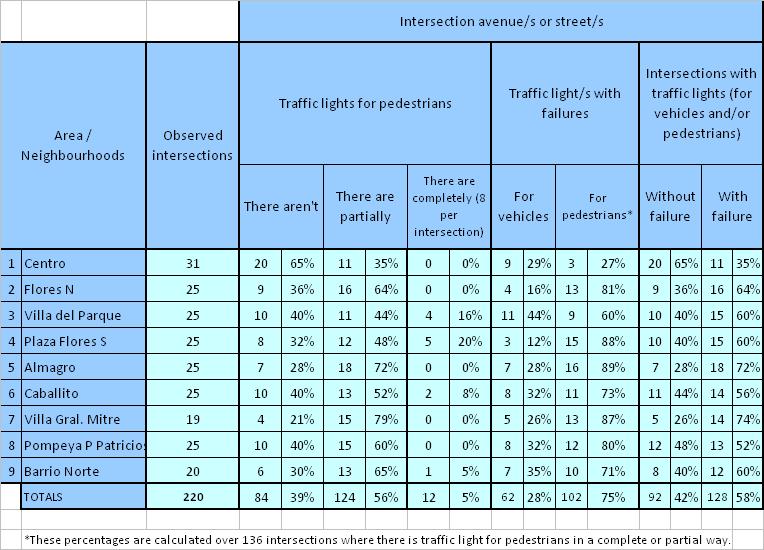Research about traffic lights’ condition in Buenos Aires City
Research carried out in 220 intersections of street/s and/or avenue/s in 10 areas of Buenos Aires City, on June 2013 (work days, from 9 to 18)
Comments
Most of observed intersections, 58%, had burnt out lamps, failures, in traffic lights for vehicles and /or for pedestrians.
There is a noticeable lack of traffic lights for pedestrians, in 39% of them, in 56% traffic lights for pedestrians are incomplete, and only 5% of the devices are totally installed. And a very serious fact: in the intersections with traffic lights for pedestrians, most of them, 75%, had burnt out lamps.
Regarding traffic lights for vehicles, almost 3 out of 10 intersections had burnt out lights, which is 28% of the cases.
Conclusions
Traffic lights, in urban areas, organize rights of way, making possible a safer and more fluent circulation for vehicles, which can go through crossroads without slowing down. That’s why traffic lights are often placed along avenues, where people drive faster or in streets with a lot of circulation of vehicles and pedestrians. These last ones are given information by the traffic lights so that they can cross in a proper moment, with enough time to do it safely.
A crossroad with traffic lights that don’t work causes confusion and leaves passer-by in a higher risk than the one that he/she would be running if the corner didn’t have traffic lights, due to the characteristics of the crossroads which have already been mentioned and the drivers’ tendency, especially, to drive sure about their priority.
The lack of traffic lights for pedestrians and their bad maintenance condition deprive pedestrians from being safer.
Traffic lights in the Buenos Aires City are in bad conditions, with maintenance difficulties which can bring about accidents and/or crashes.


